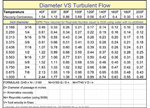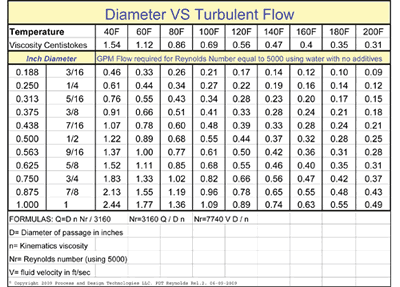Determining Maximum Mold Cycle Counts
Ongoing data collection and visual inspection of tooling and parts is the only method that will allow you to balance maximizing tooling life, production capability and mold reliability.
The first production meeting with my new employer went something like this: “We want you to establish a PM program that is based on maximum cycle counts for all our molds.” Then, before I could launch into an explanation of how best to determine maximum cycle counts, I was hit with the follow-up: “So, how many cycles do you think our molds can safely run before we need to clean them?”
Leaving my crystal ball at home and unable to get my x-ray vision working, there was no way to answer this question with any real accuracy. Unfortunately, this is not what they wanted to hear. The group of PhDs surrounding the table looked on with minor disgust, assuming this should be an easy question for a mold guy to answer. They also were disappointed because they would not be able to leave the meeting with a solid scheduling plan for production that would help molds run better and eliminate some apparent mold damage issues they had suffered in the past from molds being over-run.
Generic Numbers
Not wanting disappoint them right out of the gate, I threw out a standard rule of thumb used when pressed for max cycle counts: 250,000 is typically a good starting point, but can vary greatly—up or down—depending upon the following production characteristics and mold design:
- Resin type, additives, required temp, corrosiveness, abrasiveness and flash rate
- Residue type, powder, flakes, gummy (tar like) or oily consistency
- Vent locations, depth and finish
- Vent dump size, location and configuration (ring, channel, blind pockets, etc.)
- Static vs. dynamic (moving tooling) vents
- Tooling plating type and condition
- Inaccessible internal bushing and other actuating components
- Internal condensation level and mold plate steel type
- O-rings and other internal water seal leakage history
- Specific hot or cold runner issues
Another critical element when determining max cycle count is knowing part defect frequencies and positions that can be affected by many of the above criteria in specific areas. Mold and part defects localized by imbalanced fill or steel variations need to be recognized and considered when setting max counts. But generally speaking, anytime we overrun a mold, we increase the risk of molding bad parts, though burns, shorts, weld lines, dirty and flashed parts. Mold off-gassing—or residue—will end up someplace if it can’t escape through clean vents.
In Real Life
Let me say first that stopping and pulling molds for scheduled PMs is a good maintenance practice … period … but unfortunately not always possible in every situation if you want to keep your customers happy and in parts. What? A mold maintenance evangelist saying that regularly scheduled PMs won’t make us more money by optimizing mold performance? How can this be?
Let me clarify.
Obviously, if a mold was pulled for a good cleaning every time its maximum cycle number lit up, the mold—and those responsible for mold maintenance would obviously be grateful. With scheduled maintenance, it is much easier to more accurately gage the labor hours required to disassemble, clean and return it to production, knowing that the tooling has not been worn prematurely with gummed up close fits. No surprises in mold repair is always a good thing for schedulers, the tooling and labor budget; however, in the real world this seldom happens. Production rules.
Molders are customer-driven—as they need to be—when it comes down to running a mold to complete an order. If a couple of more hours, shifts, days and in extreme cases—weeks are required to get an order completed, the mold will run—or lock up trying.
So why bother setting max cycle counts if they are not adhered to? Although we may not always be able to clean every mold every time it needs it, it is critical with some molds simply because of the damage that can occur when max counts are ignored. When steel is gone—it’s gone. So the challenge in the shop is to know max counts for molds along with a safe range where molds should be pulled if possible, but if in danger of missing production schedules, may be run longer without undue damage.
Molds that require short production runs also are in danger of premature tooling wear if the tool room doesn’t track total mold cycles for a series of short orders. It is easy, without a tracking system, to damage tooling simply because cycle counts get lost in the day-to-day affairs of pulling and setting lots of molds.
Overrun molds also create situations that require more abrasive cleaning methods, which in itself can be hard on tooling and drastically reduce usable life, as noted in the following case.
An Expensive Lesson
One particular 16-cavity medical mold had a sleeve/core setup with a typical radial vent ring groove (.060 wide x .001 deep) at the bottom of the part around the core that fed in to 3 flats (.250 x .060 deep) that ran down the core lengthwise into a radial vent dump that was .125 deep x .125. wide. The part vented fine up to about 150,000 cycles, (or 20 days, or 480 hours), which historically, under normal processing parameters, was how long it took to fill up the vent dumps.
Once the vent dumps are full, and having nowhere to go now, the residue was forced past the flats, between the core and sleeve where the resulting sliding action of the core and sleeve during ejection turned the typical red powery residue in to a black gummy substance that quickly wore down the parting line of the softer, and expensive, core. This resulted in flash on the bottom of the part. The mold builder would not let our tool room increase the size of the dump (his reasoning becomes clear) maintaining it would compromise the ability of the sleeve/core alignment during part fill and ejection.
Run It Anyway
Our particularly aggressive production manager made the controversial decision to run the mold an extra week (50,400 more cycles) to get additional uptime. When finally pulled, nine of the 16 cavities had flash over or close to spec (.003 max) requiring us to send the cores back to the builder (surprise!) to be reworked (welded, ground and plated). The sleeves were so gummy that the ejector plate could not be moved by hand (prybar) and required considerable force (e.g., a large mallet) to remove the cores from the sleeves.
Through ongoing diligent inspections during repairs, we found that even a few hours over the maximum cycle count caused excess and measurable wear, and from that point on this mold had a mandatory max count of 150,000 cycles, no exceptions. We also found that if the mold ran over its cycle limit, the cores required scotchbriting to remove the excess ground in residue. If this was performed incorrectly—a repair tech could easily round-over the sharp, leading edge of the sealing diameter of the parting line, which in turn would cause flash, setting up yet another toolroom versus process debate over the actual root cause of the flash. But cleaned during the safe range of cycle counts, the residue was quickly and easily removed via ultrasonics, creating no additional wear whatsoever.
A hard lesson indeed, but a common problem that portrays the importance of setting accurate numbers for maximum cycle counts on molds that from time to time—get overrun.
Increasing Run Time
On the other end, there are many molds that can easily run over 250,000 cycles, that need to have this number validated. One mold was a 48-cavity jump thread cap mold that we started out at 250,000 cycles and found—after steady count increases of 100,000 per run—that we could actually run the mold to 1,500,000 before it needed cleaning! The fill configuration and resultant residue in this mold was contained in non-critical static vent dumps that posed no threat to moving tooling or shut-offs. For non-tooling trained administrators, it is sometimes difficult to understand why molds that run similar resins have such different reactions to extended cycle counts. This is why the effects of process variations need to be monitored and understood so we can maximize runtime without additional component wear.
Basic Production Data Required
What you really need to know to set maximum mold cycles can only be determined through close visual inspection of mold plates and tooling after a production run and the ability to accurately answer a few production related questions that relate to maintenance requirements:
- Date and time the mold was started.
- What press did it run in?
- Who started it?
- What configuration is the mold running?
- Date and time the mold was stopped.
- Who stopped it?
- Why was it stopped (scheduled or unscheduled stop reason)?
- How many cycles did the mold run?
And also very helpful when evaluating mold residue/wear levels:
- Was the run interrupted by stops for changeovers, unscheduled breakdowns or weekend downtime?
- Were repeated ejector counts required to release the parts from the mold?
- Was the mold properly and regularly serviced in the press during the run?
- Was the cycle time and processing parameters consistent with past runs?
- Are any part defects related to flash in a vented area?
Summary
Consistent with operating any mechanical apparatus, setting max mold cycle counts requires accurate documentation of visual observations along with tracking defects, defect positions and required corrective actions.
Molds and tooling are not getting cheaper, and thus can significantly reduce a company’s profit margin on specific jobs through off-the-cuff decisions to run molds longer just to fill a truck—or an empty corner of a warehouse. Efficiently producing quality parts on time is the mantra of every molder. You cannot live this mantra by allowing production requirements to dictate maximum cycle counts in every situation. Ongoing data collection and visual inspection of tooling and parts is the only method that will allow you to balance maximizing tooling life, production capability and mold reliability.
Related Content
How to Use Scientific Maintenance for More Accurate Mold and Part Troubleshooting
Discover how adopting scientific maintenance approaches helps improve mold lifespan, minimize failures, and optimize production outcomes.
Read MoreWhat is Scientific Maintenance? Part 2
Part two of this three-part series explains specific data that toolrooms must collect, analyze and use to truly advance to a scientific maintenance culture where you can measure real data and drive decisions.
Read MoreWhat is Driving Mold Lifecycle Management Digitalization?
OEMs are looking to partner with suppliers to share and track data across the supply chain for advanced intervention and process management.
Read MoreHow to Analyze and Optimize Cutting Conditions to Reduce Cycle Time
Plastic injection mold design and manufacturing company puts NC program optimization software module to the test. The results were surprising.
Read MoreRead Next
Detecting Water Flow Restrictions
A look at how taking the time and data to analyze a mold problem will help you repair it right—and permanently—the first time.
Read MoreAre You a Moldmaker Considering 3D Printing? Consider the 3D Printing Workshop at NPE2024
Presentations will cover 3D printing for mold tooling, material innovation, product development, bridge production and full-scale, high-volume additive manufacturing.
Read MoreHow to Use Strategic Planning Tools, Data to Manage the Human Side of Business
Q&A with Marion Wells, MMT EAB member and founder of Human Asset Management.
Read More





















